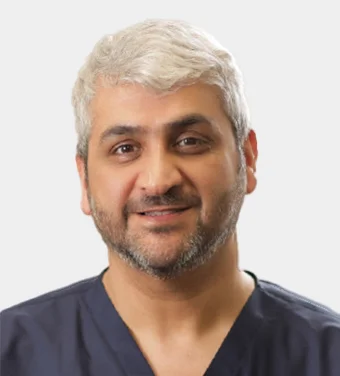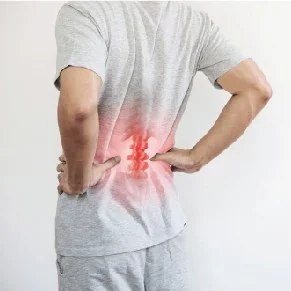
IBS Hospital’s Microscopic Discectomy sets a new standard for spine surgery. With unmatched precision, we address disc-related issues, offering lasting relief. Your journey to a pain-free spine starts here.
What is Microscopic Discectomy?
Microscopic discectomy is one of the safest and time-tested surgical treatments for a herniated disc. It relieves pressure on a spinal nerve root by removing the herniated portion of the disc that causes pain.
The surgery is performed under general anesthesia. A small incision of 2-3 cm is made over the affected area of the spine.The muscle near the affected area is dissected, and retractors are placed to hold the muscle and skin away from the surgical site, allowing adequate exposure of the vertebrae.
Under the microscope, the problematic disc portion is identified and confirmed using intra-operative radiology. The disc is then carefully removed in a piecemeal fashion, ensuring the nerve is relieved of all unwanted pressure. The incision is closed; with ;sutures. The surgery typically takes about 30 to 45 minutes, and the patient usually goes home on the same day.
What is the process / patient journey for undergoing Microscopic Discectomy at IBS Hospital?
Outpatient Surgery / Same day discharge:
You have been admitted to the hospital. The procedure is explained in detail to the patient or their relative, and consent is obtained. A pre-anesthesia checkup (PAC) is conducted. Once cleared, the patient is transferred to the operating room (OT) for the procedure. After the procedure, the patient is moved to the recovery area, and once stable, they are transferred to their respective room. Some discomfort or pain may be experienced, for which you will be provided with analgesics.
You will be observed in your room. The discharge process will be initiated. You or your relative will be provided with an explanation of the discharge medication and follow-up instructions. Once everything is complete, you will be discharged.
What is the post-surgery follow-up and recovery timeline?
After your initial physical assessment, you may be advised to see the surgeon after a week for stitch removal and for important follow-up to ensure proper healing. Initially, some soreness and pain may occur, which can vary depending on the type of surgery. The presence of bruising in the area is normal. Following the assessment, your spinal problem will be further investigated on an outpatient basis. Once the investigations and medical assessment are completed, your surgery will be planned, and you will receive advice to be admitted on the day of the procedure.
Our team of experts that make it possible
Meet the team of highly specialised and experienced neurosurgeons, neurologists, orthopedicians, and other experts in the field of neurology and spine care. Our team is dedicated to providing personalised and compassionate care to each patient, with the goal of helping them achieve the best possible outcomes.
IBS Hospital Empowers Your Treatment with Cutting-edge Technology
We continuously incorporate cutting-edge technologies from around the world into our offerings, such as a surgical system that allows for precise and confident complex procedures. We use magnetic stimulation to treat certain neurological conditions and create personalised brain maps for tailored treatment plans. Nerve monitoring during surgeries ensures the nervous system is not compromised, and a robotic exoskeleton aids in mobility issues. Our goal at IBS Hospital is to provide the best care possible, utilising the latest and most innovative technologies available.




